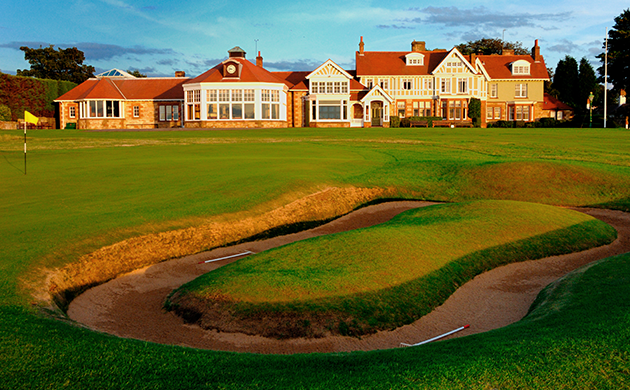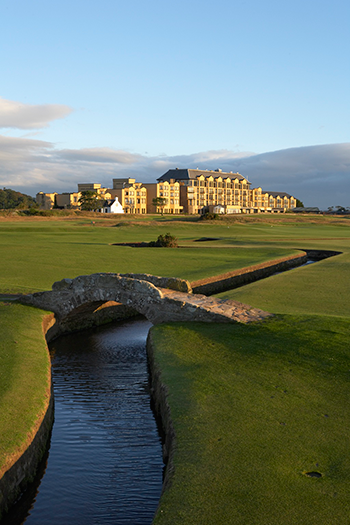
First played in 1860, the Open Championship, known in the U.S. as the British Open, is golf’s oldest Major — and far and away the most accessible for traveling duffers. In the hundreds of times the other three Majors (the U.S. Open, PGA Championship and Masters) have been cumulatively held, they have reached less than a dozen publically accessible courses that non-members can actually visit. In stark comparison, every single British Open course welcomes foreign visitors, to varying degrees. When the Open returns to Muirfield Golf Links July 18 to 21 for its 142nd edition, it will once again head to a course that you, too, can play.
While many are technically private clubs, the meaning of “private club” is vastly different in the British Isles, and by and large they depend on outside greens fees for their economic survival. Some have limited public availability, such as Muirfield. Some are so popular it is hard to get a tee time, such as the Old Course at St. Andrews. Some are resort-based courses and take all paying players, such as Turnberry and Carnoustie. With the odd exception, most notably Royal Troon, they are grateful for outside players who subsidize club memberships and, at some such as Muirfield and Prestwick, the welcome goes far beyond golf and into the stately dining rooms and museum-like immersion experience.
There are more than a dozen British Open venues you can play, all of which are exceptional, but these are the standouts.
This is often ranked the world’s No. 1 course. But its real appeal is not the course itself but the history, walking in the hallowed footsteps of every great golfer to play the game on the world’s oldest course. It has also held the Open the most times, and contrary to popular belief, is a public, municipal course that is owned by a non-profit trust and operated primarily for the people of St. Andrews. Because it is the course that more golfers want to play than any other, tee times are scarce, but there are several ways to get in on the action. The two most popular being to book through a high-end tour operator like Haversham & Baker or Perry Golf and pay a premium, or to visit St. Andrews and enter a daily lottery for reserved public tee times. If you are in town for several days, chances are you will get on — at regular prices — while playing many other great courses nearby in the interim.
The birthplace of the Open, it was held here for the first dozen years before organizers came up with the idea of rotating courses. An original Old Tom Morris design, Prestwick is the quirkiest of all, with tumultuous features and famous one-of-a-kind holes, such as the Alps and Cardinal. This is an awesome round of golf on one of the most unusual, memorable and underrated courses. It offers a package that includes lunch in the Dining Room with members (bring a jacket), as well as all-day play deals in the summer when it stays light till 10 p.m. and you can enjoy the full 18 three times (walking only).
While Royal Portrush is historically notable as the sole British Open venue on Ireland (specifically, it’s in Northern Ireland), the real reason to play here is because this epic and hearty links is perennially rated in the world’s top 20. It is an awe-inspiring mélange of rough, dunes and in-your-face seaside exposure.
The toughest tee time of any Open venue, Muirfield is also widely considered the finest golf experience in Scotland and, by extension, the world. One reason tee times are hard to come by is because of the unusual typical day at Muirfield: You play four balls (normal individual stroke play) in the morning, then put on jacket and tie, have a delicious and elaborate groaning board lunch — the dining session starts with gin and tonics and ends with port —then you change and go back out for another faster 18 of foursomes (two-man teams alternating shots). Because most golfers play twice, slots are fewer, and it’s best to book through one of the aforementioned tour operators.
Site of the famous “Duel in the Sun” between Jack Nicklaus and Tom Watson back in 1977, Turnberry is the most dramatic seaside golf course, with an unrivalled series of holes on cliffs, past ancient castle ruins and around the famous lighthouse. Even the inland holes, set between towering dunes, are amazing. If it’s not the best course on the planet, it’s the best looking and, surprisingly, a less punishing and more user-friendly links experience for those unfamiliar with high winds and deep rough. As part of the luxurious Turnberry Resort, with a spa, golf academy and a second solid course (The Kintyre), it’s also the easiest to book.
Photos Courtesy of Golf East Lothian and Scottish Viewpoint


